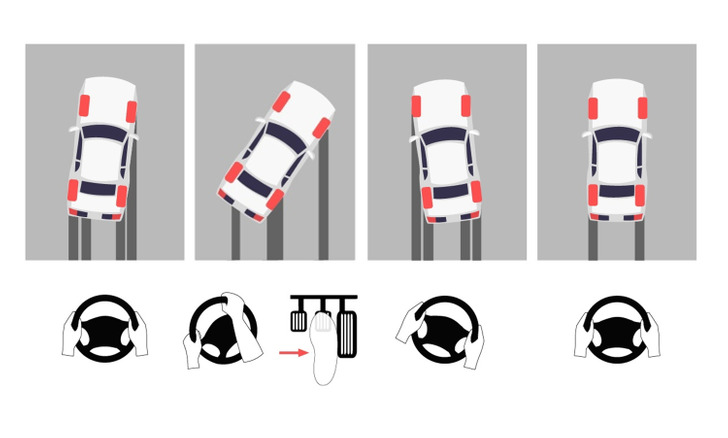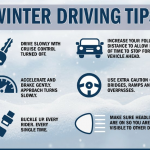Throughout winter, you should always adjust to driving conditions, especially when the roads are covered in snow and ice. It is important for you to know how to avoid skidding, and what to do if you find yourself in a skid situation.
Winter weather can make for slippery driving conditions, which can cause drivers to go into a skid, check out our recommendations for avoiding skidding or how to recover from a skid situation this winter.

How can I avoid skidding?
Avoiding skidding in winter, especially on icy or snowy roads, is crucial for maintaining control of your vehicle and ensuring safety. Here are some tips to help you avoid skidding:
Drive Slowly
-Reduce your speed in winter conditions, especially when roads are icy or covered in snow.
-Give yourself more time to react to unexpected situations.
Increase Following Distance:
-Maintain a greater following distance between your vehicle and the one in front of you.
-This gives you more time to react to sudden stops or movements.
Use Winter Tires:
-Consider using winter tires, which are designed to provide better traction in cold conditions.
-Make sure your tires have adequate tread depth.
Avoid Sudden Movements:
-Accelerate, brake, and steer gradually and smoothly to avoid sudden movements that could lead to skidding.
-Sudden actions can cause your tires to lose traction.
Brake Carefully:
-Brake gently and with control to avoid locking up the wheels.
-If your vehicle is equipped with an anti-lock braking system (ABS), maintain constant pressure on the brake pedal in case of a sudden stop.
Stay Informed:
-Check weather forecasts and road conditions before you travel.
-Be aware of any advisories or warnings related to winter driving.
Use Chains or Snow Tires When Necessary:
-In extreme conditions, consider using tire chains for added traction.
-Ensure your snow tires are properly installed and in good condition.
Practice in a Controlled Environment:
-If possible, practice winter driving skills in an open, snowy, or icy area to become familiar with how your vehicle responds.
=Remember, the key is to be cautious, alert, and proactive in adapting to winter driving conditions. If conditions are severe, consider delaying your trip or using alternative transportation methods when possible.

What to do if You Start to Skid
If your car starts to skid, it’s important to stay calm and take corrective actions to regain control. The specific steps to take depend on whether you’re experiencing a front-wheel skid (understeer) or a rear-wheel skid (oversteer). Here’s what to do in each situation:
Front-Wheel Skid (Understeer)
Stay Calm:
-Do not panic. Keep a firm grip on the steering wheel.
Lift off the Accelerator:
-Take your foot off the accelerator to transfer more weight to the front wheels.
Steer in the Direction You Want to Go:
-Gently turn the steering wheel in the direction you want the front of the car to go.
Avoid Sudden Movements:
-Do not make sudden or aggressive steering inputs, as it could worsen the skid.
Gradually Apply Brakes:
-If necessary, apply the brakes gently to slow down, but avoid slamming on the brakes, as this can cause the vehicle to skid further.
Rear-Wheel Skid (Oversteer)
Stay Calm:
Keep a steady grip on the steering wheel and remain calm.
Steer in the Direction You Want to Go:
-Turn the steering wheel in the direction you want the rear of the car to go.
Avoid Overcorrecting:
Be gentle with the steering; overcorrecting can lead to a fishtail motion.
Control the Skid with Throttle:
If the rear wheels are sliding to the left, gently apply a bit of throttle. If sliding to the right, ease off the throttle slightly.
Brake Carefully:
If necessary, apply the brakes gently and gradually.
Shift to Neutral (Advanced Technique):
For rear-wheel skids, an advanced technique is to shift to neutral to disengage the drive wheels temporarily. However, this should be done cautiously, and it’s not always recommended for all vehicles.

